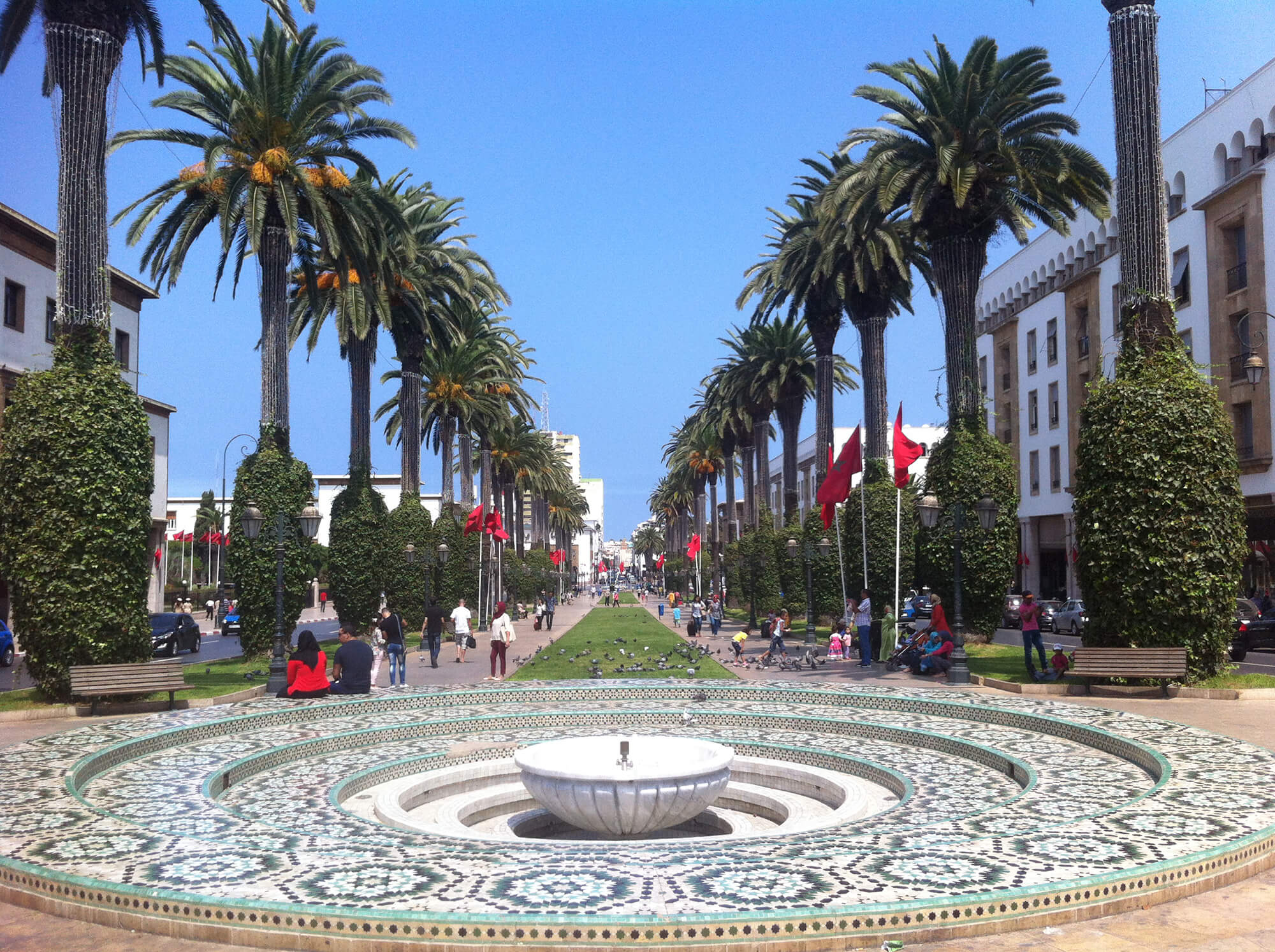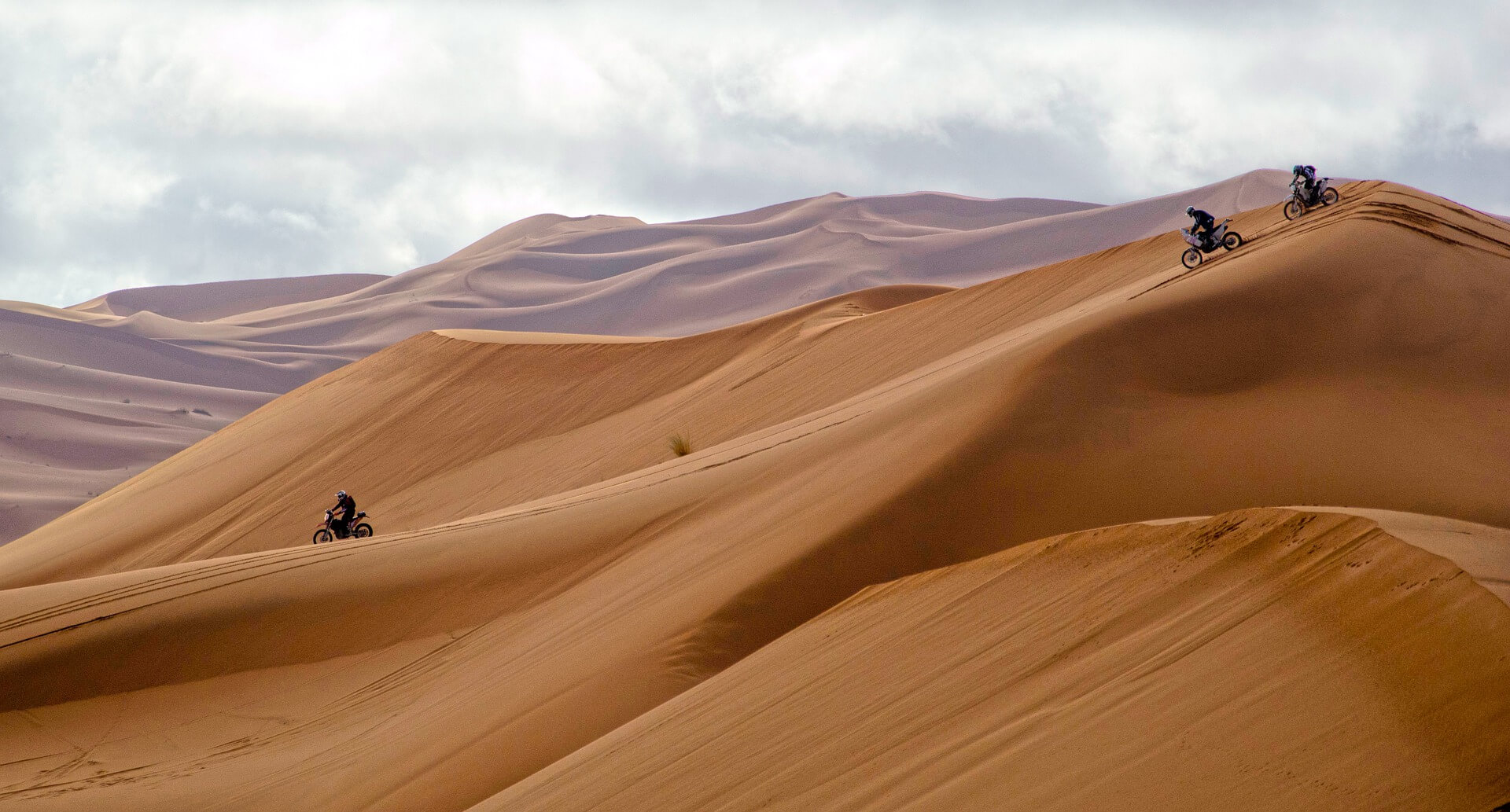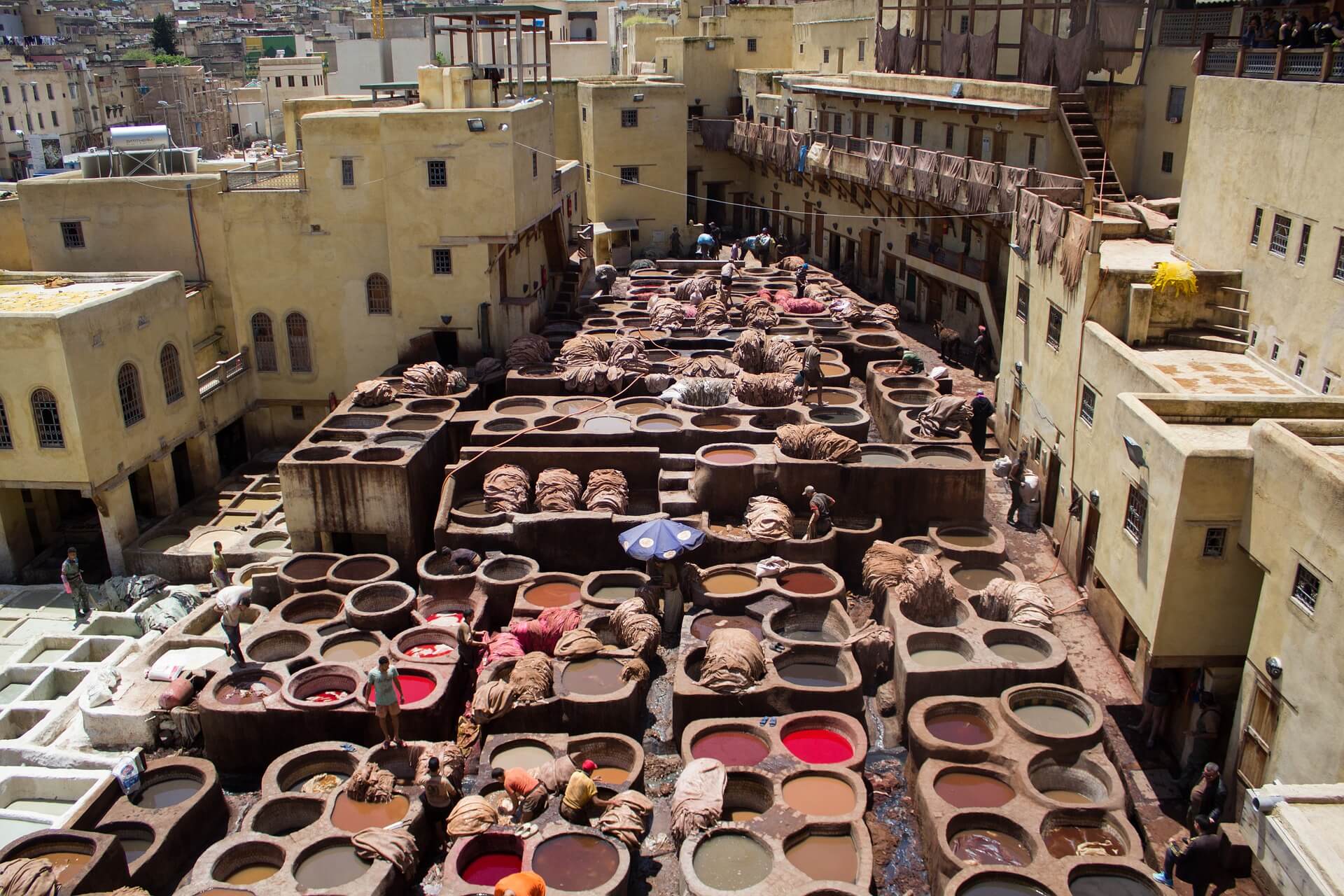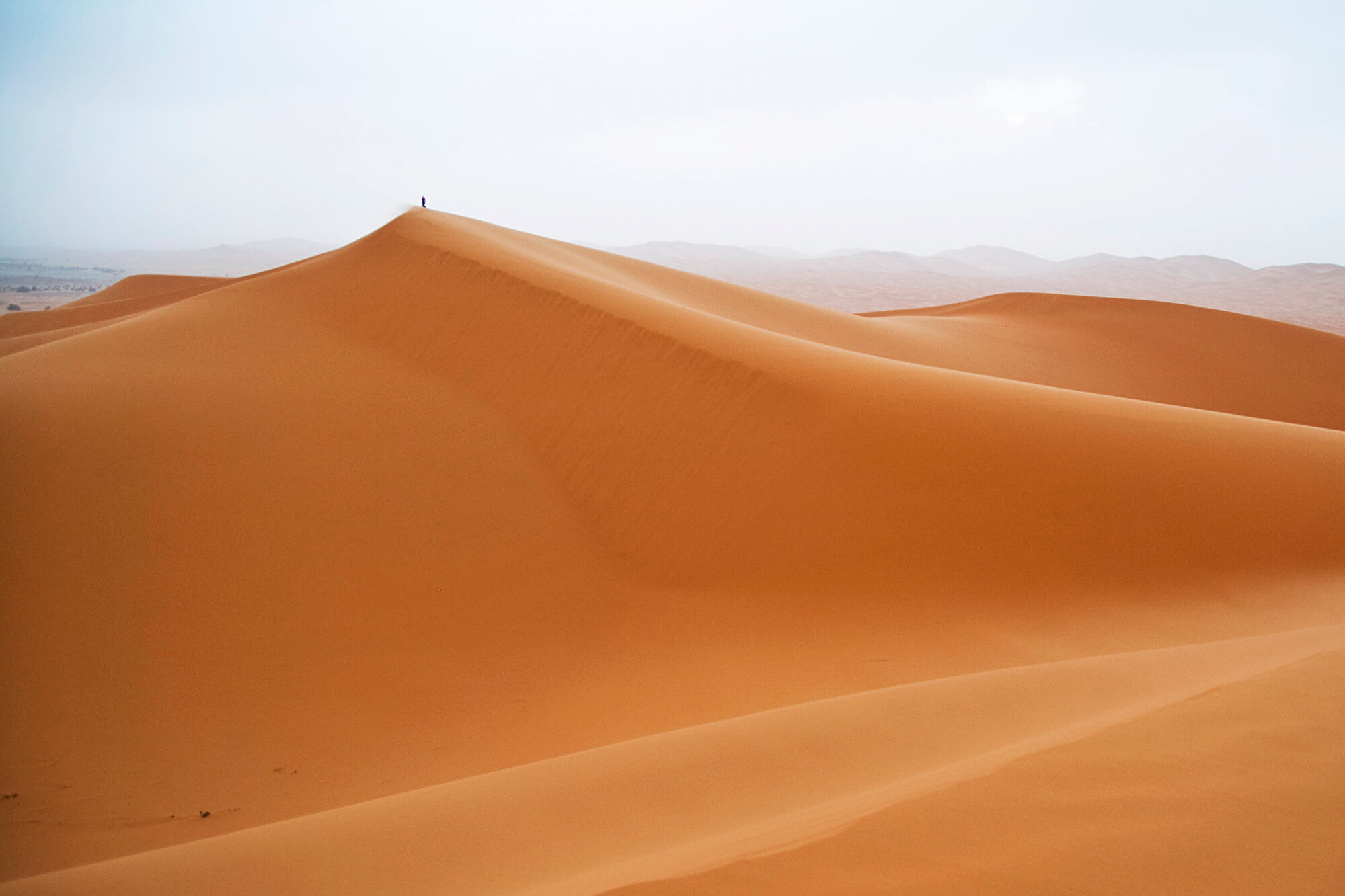Morocco’s capital city is steeped in history, full of cultural treasures and impressive green spaces. Not yet overrun by tourism, Rabat maintains its big city vibe without the crowds and plenty of sites to discover.
Rabat is Morocco’s capital city located on the Atlantic coast and near the Bou Regreg River. One of the four imperial cities of Morocco, Rabat was founded by the Almohads in 1146. Nowadays, it is the primary residence of King Mohammed VI.
Aside from being a city of official government buildings, foreign embassies, and the king’s palace, Rabat has so much to offer. You can explore the ancient medina, stroll along the beaches, delve into history, and dance to traditional and modern beats during the popular Mawazine Festival. The best part about this city is that it’s not overrun by tourism so you can bask in the culture without the crowds.
Hassan Tower
This colossal minaret reaches for the sky and was intended to be the world’s largest mosque reaching a height of 86 meters (260ft.) It was commissioned by Abu Yusuf Yaqub al-Mansour, the third Caliph of the Almohad Caliphate, and construction began in 1105. Unfortunately, following his death in 1199, the money ran out and construction came to an end so the mosque was left unfinished and is still incomplete.
Hassan Tower was created as a symbol of the Sultan’s victory over Spanish Christians. This glorious monument made of red sandstone is by far, one of the most important historical sites in Rabat.

Chellah
This ancient necropolis is an archaeological wonder with its decorative, red sandstone walls that overlook the Oued Bou Regreg River just 2 km from the Atlantic Ocean. Immerse yourself in the culture of Morocco and explore the traces of antiquity from several civilizations that include the Phoenicians, Carthaginians, Romans, and Arabs. From a Phoenician trading post to Roman rule, the site was abandoned after an earthquake destroyed many of the structures.
Later, the Arabs took over the Roman ruins and built mosques, a madrassa, a hammam, and a mausoleum to house the tombs of the Sultan, his wife, and relatives. In 2012, UNESCO added the magnificent minaret, built of stone and zellige tilework to its roster. There is even an eel pond that still supports the ancient belief that eels possess a protective power and are a symbol of fertility. Women then and now, feed the eels hard-boiled eggs hoping to become pregnant. In 2012, the Chellah was registered as a UNESCO World Heritage Site.

Kasbah des Oudaias
Wander around the quiet, narrow streets full of blue and white painted neighborhoods while you take in amazing views of the river and the ocean. This is the oldest part of Rabat and also the location of the city’s oldest mosque, the Kasbah Mosque, built during the 11th century.
Bab Oudaia is the main gateway to the Kasbah and makes for a grand entrance with its geometric arches, ornate, stone carvings and Kufic inscriptions. You can explore the old palace grounds and climb the ramparts overlooking the Bou Regreg River and the Atlantic. Browse the Oudais Craft Museum with its marvelous collection of Amazigh/Berber carpets, musical instruments, pottery, jewelry, and traditional Moroccan clothing.
Take a quiet walk through the enchanting and fragrant Andalusian Gardens. These beautiful gardens, created in the 20th century by the French, are full of traditional Andalusian botanicals. This tranquil oasis lets you relish in exotic blooms and fruit trees of banana, lemon, and orange.

Rabat Archaeology Museum
Hailed as the country’s most extensive archaeological collection of ancient Moroccan artifacts, statuary, and relics. Here you will learn interesting facts about Morocco’s culture. Journey back in time and discover artifacts from the Paleolithic, Neolithic, Pre-Roman, and Roman eras. There is also an impressive collection of bronze statues from the nearby ancient Roman city of Volubilis.


Avenue Mohammed V
Stroll along the city’s main avenue where you will pass by some of Rabat’s most elegant structures. Assouna Mosque is just one example of extravagance. Built by the Alaouites during the 18th century, Assouna has a beauty that will captivate and astonish. There is also the infamous Balima Hotel and the Post Office, both are impressive, architectural sites.

The Sidi Bouknadal Gardens/Jardins Exotiques de Bouknadel
Step outside of the city and stroll the grounds of this exotic, botanical wonderland full of diverse garden styles: Chinese, Japanese, and Andalusian. Located just 15 km from Rabat, these gardens are a welcome escape into nature. There are well over 1,000 species of trees and plants, some of the rare varieties, from around the world.
Created by the French horticulturist, Marcel Francois, who traveled all over the world collecting plants, these gardens opened to the public in 1961 to share his passion for nature. Aside from Francois’s exquisite collection, there are waterfalls, fountains, pools, swamps, bridges, pathways, and even an aviary to fully immerse yourself in the natural world.
https://www.jardinsexotiques.com/

Mohammed VI Museum of Modern and Contemporary Art
Opened in 2014, this is Morocco’s first, independent modern and contemporary art museum. You can view artworks of over 200 Moroccan artists from Impressionists to Post Modernists. With an impressive permanent collection and temporary exhibitions showcasing the work of international artists, you are sure to be inspired. This is an excellent way to further explore Morocco’s artistic and cultural heritage.

Salé
Just opposite the river of Rabat is the charming, working-class town of Salé. You can take the tramway or a short boat ride over to this quiet hideaway from the capital city. Visit the Abu Hassan Medresa, a school of science and religion, constructed under the Marinid Dynasty during the 14th century. You will marvel at its extravagant decorations from carved, cedarwood to zellige tiles.
Venture to the upper floors to see the modest student’s chambers and experience incredible views of the city from here. Explore the many woodworking factories and you may just be lucky enough to get a behind-the-scenes peek into how the skilled and talented craftsmen create their stunning works of art.

National Museum of Photography
Housed in the newly revamped 19th century Fort Rottembourg/Borj el Kebir, this is Morocco’s first national photography museum that recently opened in January 2020. The collection features photographic artworks by local and native Moroccan artists. The museum is dedicated to making art exhibitions accessible to everyone and supporting young and emerging photographers of Morocco.
Rabat is a relaxed city steeped in historical and cultural treasures with plenty of green spaces to keep you sane. Tap into the rhythm of Rabat and experience all it has to offer.








